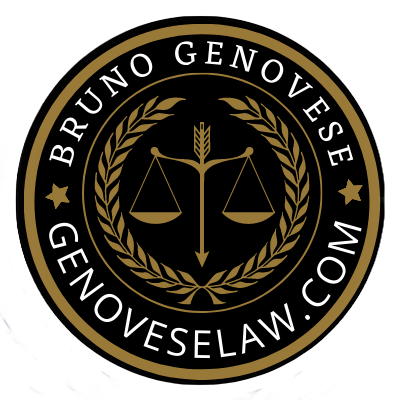Introduction
There’s something wonderfully enticing about a French leaseback property. It’s like the cheese platter of real estate investments – a tempting selection of location charm, guaranteed income, and no-hassle management. But, much like taking a big bite of strong, aged Roquefort when you were expecting something mild, you might find that this deal has a bit more bite than you anticipated.
Leasebacks promise a “sweet” experience, but the reality can sometimes be a tad strong, unyielding, and, let’s face it, a little funky. Before you sink your teeth into this bold investment, here’s a guide to understanding why it might not be as smooth as Camembert, and how to prepare for those unanticipated fees that lurk beneath the surface.
1. The Flavorful Promise of “Guaranteed” Income – But With a Zesty Aftertaste
One of the strongest selling points of leasebacks is that guaranteed income. Who wouldn’t want to invest in something that promises a steady cash flow with no added effort? But here’s where things start to get “flavorful.” Often, that “guaranteed” income is tied up in so many conditions, exceptions, and “market adjustments” that the sweetness wears off fast.
Tasting the Reality of Conditional Guarantees
The income guarantee is often the first bold taste of Roquefort in the leaseback experience. Yes, you’re supposed to get regular income, but sometimes this income can be “adjusted” depending on occupancy rates, maintenance costs, or mysterious “operational fees” that no one can quite explain. It’s like finding out that your Roquefort came with a complimentary side of sour grapes.
If you suddenly find your income dipping, ask your property manager for a breakdown of what’s going on. You may find out that your “guarantee” has more fine print than a Parisian metro ticket, and those regular payments are not quite as rock-solid as they seemed.
Savoring a Smoother Financial Experience
Before you buy, clarify exactly what “guaranteed income” means in this context. Check if the income is tied to occupancy, local tourism, or some arcane formula only the syndic understands. A little bit of research up front can save you from a very strong financial aftertaste later.
2. Maintenance Fees That Pack a Punch – Like a Surprise Flavor Profile You Didn’t Order
Much like Roquefort, leasebacks come with a few intense flavors that you weren’t expecting. Maintenance fees are a prime example. You thought you’d signed up for simple upkeep – a little landscaping here, a touch of lobby polish there. But soon, you’re paying for “emergency spa upgrades,” “essential cabana retiling,” and an assortment of other “vital improvements” that make you wonder if the syndic thinks you own a chateau.
The Unyielding Reality of Rising Fees
These fees can start small, but they have a habit of growing over time, much like an out-of-control sourdough starter. And because they’re spread across all owners, it’s hard to contest them individually. Before you know it, you’re paying top euro for an indoor garden no one uses and maintenance on that “charming” fountain out front that only works half the year.
And if you’re lucky enough to attend an annual meeting, you’ll likely hear a long list of “necessary expenses” that includes everything from new artisanal handrails to an entire lobby renovation. Each item is presented as absolutely indispensable – because, after all, we must keep the property’s spirit alive!
Swallowing These Strong Fees (Without Choking)
The best way to manage these fees is to stay informed and attend those annual meetings, or at least review the minutes with a keen eye. Ask for a clear breakdown of each fee and question anything that seems unnecessary. You’d be surprised how quickly the need for “essential” projects drops when owners start asking for itemized receipts.
3. The Unbreakable Rules of the Syndic – Aged and Stronger Than Ever
The syndic de copropriété, or property management council, is the true force behind leaseback properties. They handle everything from budgeting and repairs to setting those all-important fees. And like a well-aged Roquefort, their rules are strong, deeply entrenched, and occasionally overwhelming.
Navigating the Rules and Regulations
When you own a leaseback property, you’re bound by the syndic’s decisions. These include rules on property use, upgrades, and even restrictions on subletting. If you want to personalize your property or change management companies, you’ll quickly learn that the syndic is unyielding in its devotion to “uniformity.” It’s a bit like trying to argue with a very opinionated cheese – it’s not going to bend.
And let’s not forget the annual meeting, where decisions are made with all the efficiency of an extended French lunch. If you’re hoping to get your voice heard, be prepared for long discussions and slow progress, as each decision is deliberated with all the gravity of a national referendum.
Pairing Patience with Persistence
If the syndic’s rules are getting in the way of your enjoyment, know your rights. Familiarize yourself with your contract and any local regulations, and don’t be afraid to push for your agenda. Be prepared to advocate for yourself (and maybe bring a snack – it’s a marathon, not a sprint).
4. Annual Assemblée Générale – A Tasting Menu of Fees, Upgrades, and Unwanted Surprises
The assemblée générale, or annual meeting, is where leaseback owners come together to discuss, vote on, and (let’s be real) argue about the budget, fees, and upgrades. These meetings can be online or in person, but either way, they tend to stretch on longer than a French film festival, with all the action of a government debate.
A Sip of Bureaucracy in Every Sip
At the assemblée générale, expect each budget item to be examined with excruciating detail. You’ll hear impassioned speeches on everything from replacing flower pots to the necessity of new light fixtures. The syndic insists these improvements will “add value,” but you may find yourself questioning the wisdom of replacing last year’s imported plants with this year’s “locally sourced” lavender for €10,000.
Voting at these meetings is like attending a wine tasting where everyone has a different opinion about the bouquet. Some owners want more upgrades, others want fewer, and you’re all somehow paying for both. By the end, your head may be spinning – and not from the wine.
Decanting the Decision-Making Process
If you’re attending, bring a list of your own priorities, and be ready to question the costs that seem unreasonable. Sometimes, just bringing up alternative options can save money. And if you’re really hoping for a change, make alliances with like-minded owners – strength in numbers can sometimes sway even the most stubborn syndic.
5. Hidden Clauses – The Boldest Bite of All
When it comes to leasebacks, the strongest flavor is often buried deep within the contract’s fine print. Hidden clauses can cover everything from fee adjustments to automatic lease renewals, leaving you with far fewer choices than you anticipated.
Spotting the “Surprise” in Your Contract
Some common clauses include automatic renewal unless you cancel within a specific window, mandatory maintenance contributions, and limitations on resale options. These clauses can turn an already strong-tasting investment into something that leaves you gasping for water – or in this case, a lawyer.
If you’re bound to the contract by clauses you didn’t expect, your best recourse is to call in a real estate attorney. They can help you interpret your rights and explore possible exit strategies if the leaseback isn’t working out. Sometimes, a bit of expert negotiation can open up options you hadn’t considered.
The Art of Reading Between the Lines
Before signing, have any leaseback contract reviewed by a professional. They’ll help you understand what’s binding, what’s negotiable, and what might come back to bite you later. If you’re already in a leaseback and discovering some hidden “flavors,” don’t be afraid to consult with a lawyer about potential renegotiation or exit options.
Conclusion: Embracing the Full Strength of Leaseback Ownership
Leaseback properties can be a wonderfully flavorful investment, but like a strong cheese, they come with complexities, bold tastes, and the occasional shock to the system. If you’re ready to dive into leaseback ownership, be prepared to manage rising fees, question your syndic’s every decision, and hold your ground in those annual meetings.
With the right approach and a discerning eye, you can enjoy the richness of French leaseback ownership without letting it overpower your finances. So, here’s to handling your investment like a true connoisseur – and embracing all the flavors (and fees) that come with it. Bizou!





